Abstract
Twenty four subjects were studied for ten 1-hr sessions to determine whether the human observer's visual monitoring of individual meters in a complex display can be differentially controlled by concurrent scheduling of signals. Subjects were divided into two main groups of 12 each. One group was given fixed-interval, variable-interval, and differential-reinforcement-of-low-rates schedules. The second group was given fixed-interval, fixed-ratio, and differential-reinforcement-of-low-rates schedules. Test subjects were instructed only to detect as many signals as possible. Results indicated that observing responses to the individual meters corresponded to the temporal patterns known to be associated with the schedules for the group given fixed-ratio instead of variable-interval as a component schedule. The group given the variable-interval schedule in the three-schedule combination tended to exhibit the same pattern of viewing across each of the three meters during any given session. However, subsequent testing was performed on two more subjects over 64 sessions, by adding initial feedback of signal detection results, and instructions concerning schedule construction. These results indicated that with knowledge of schedule construction and initial feedback of detection data, differentiated responding can be maintained efficiently over long periods of time by the combination including fixed-interval, variable-interval, and differential-reinforcement-of-low-rates schedules.
Full text
PDF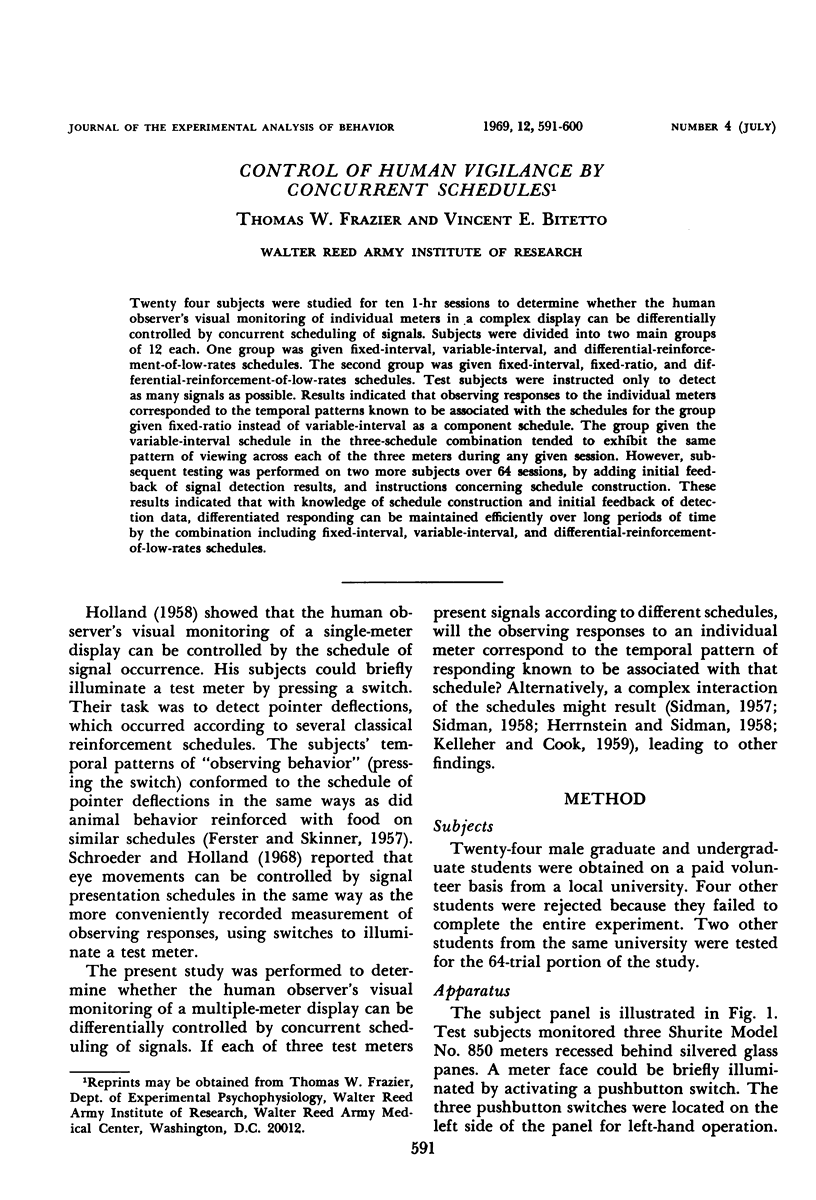
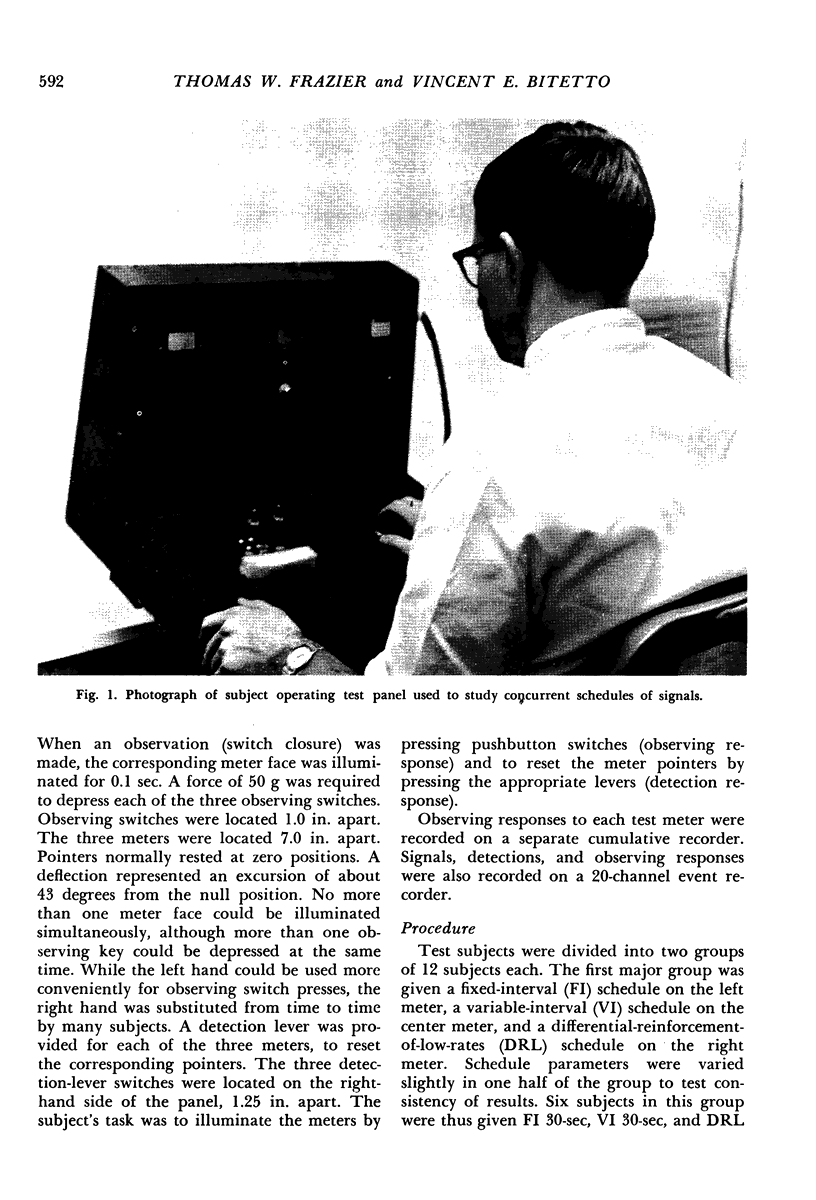

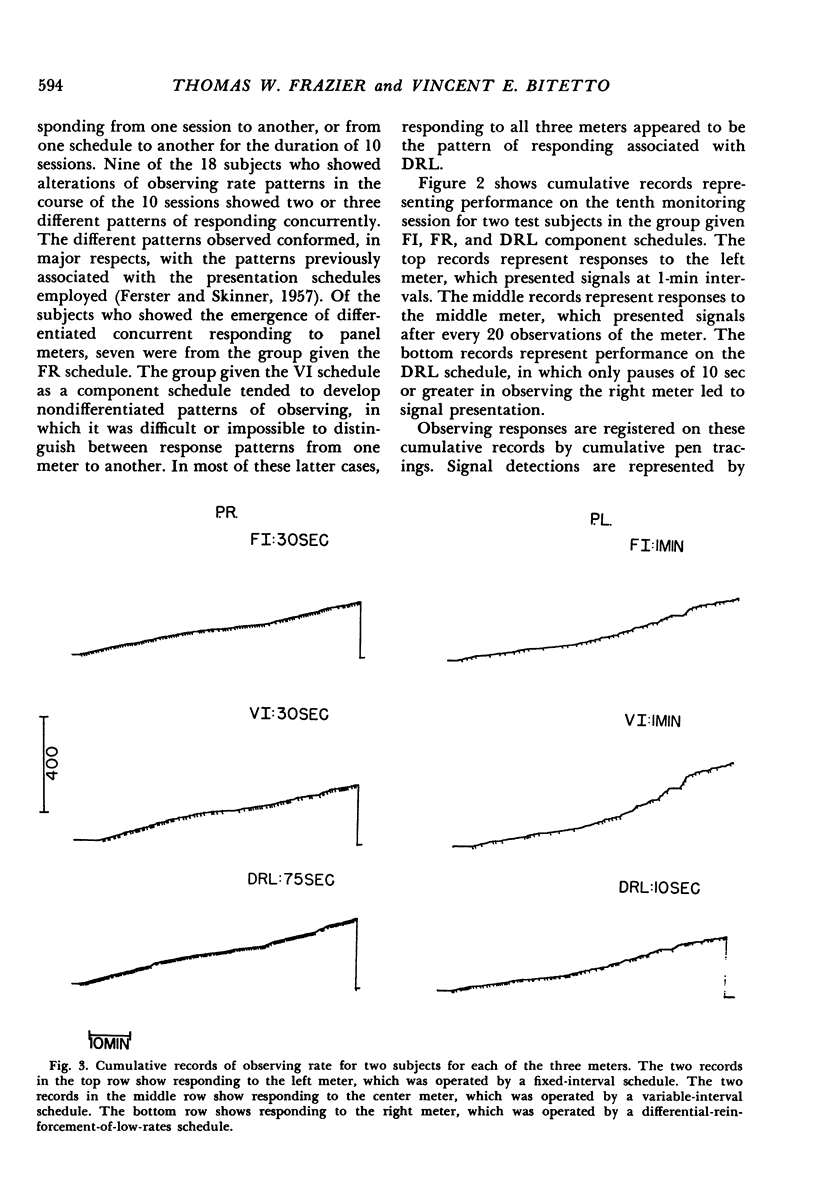
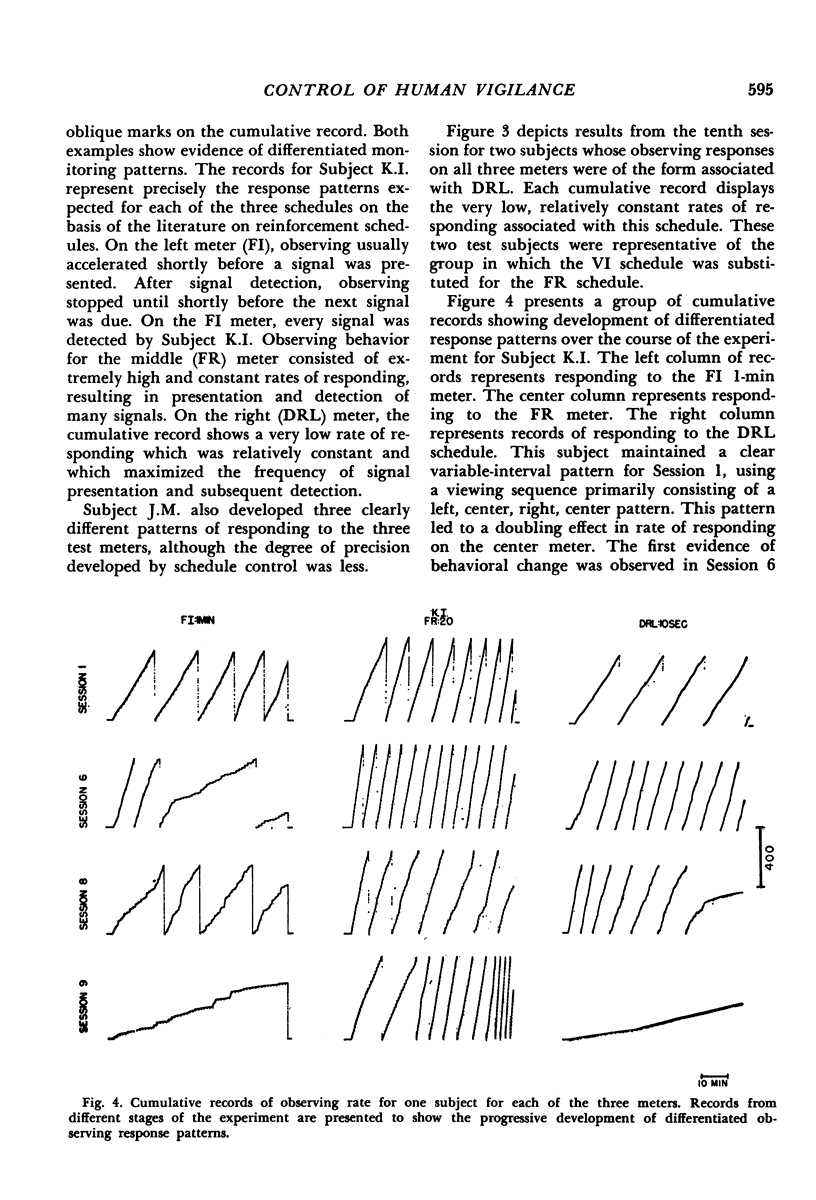
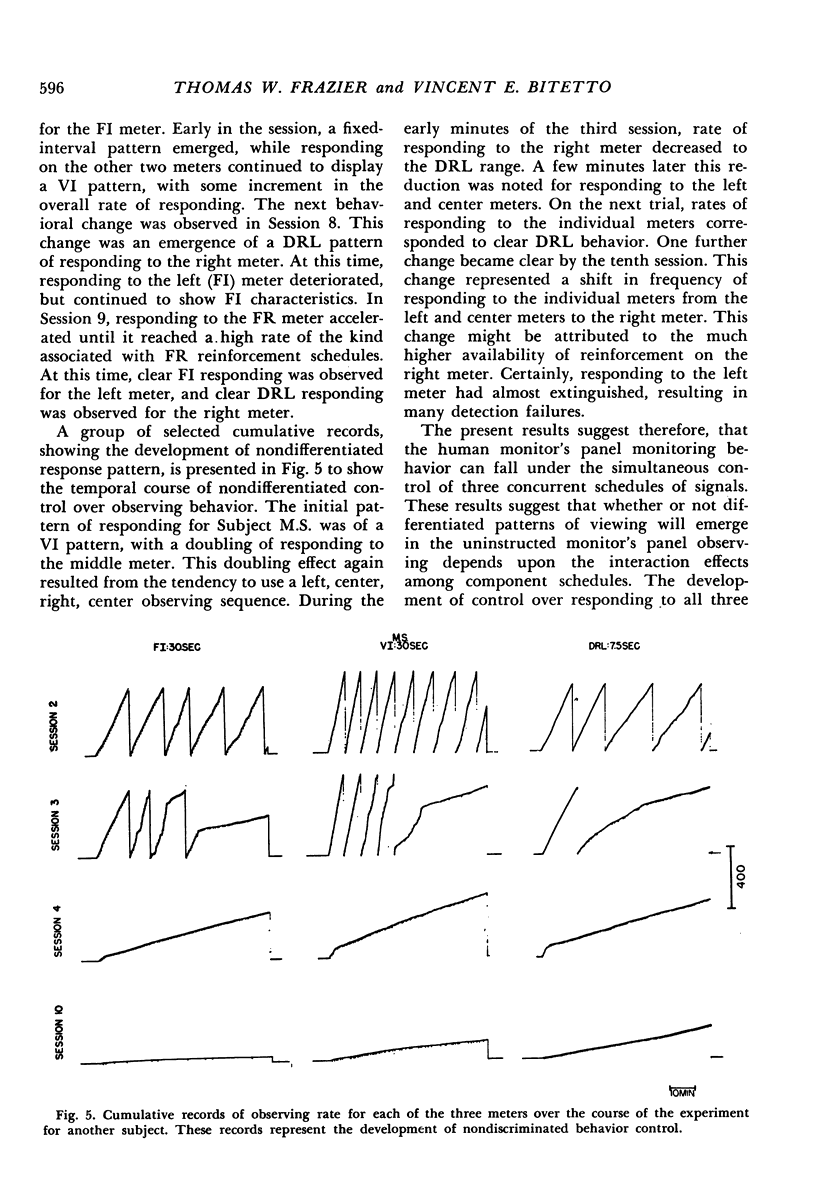
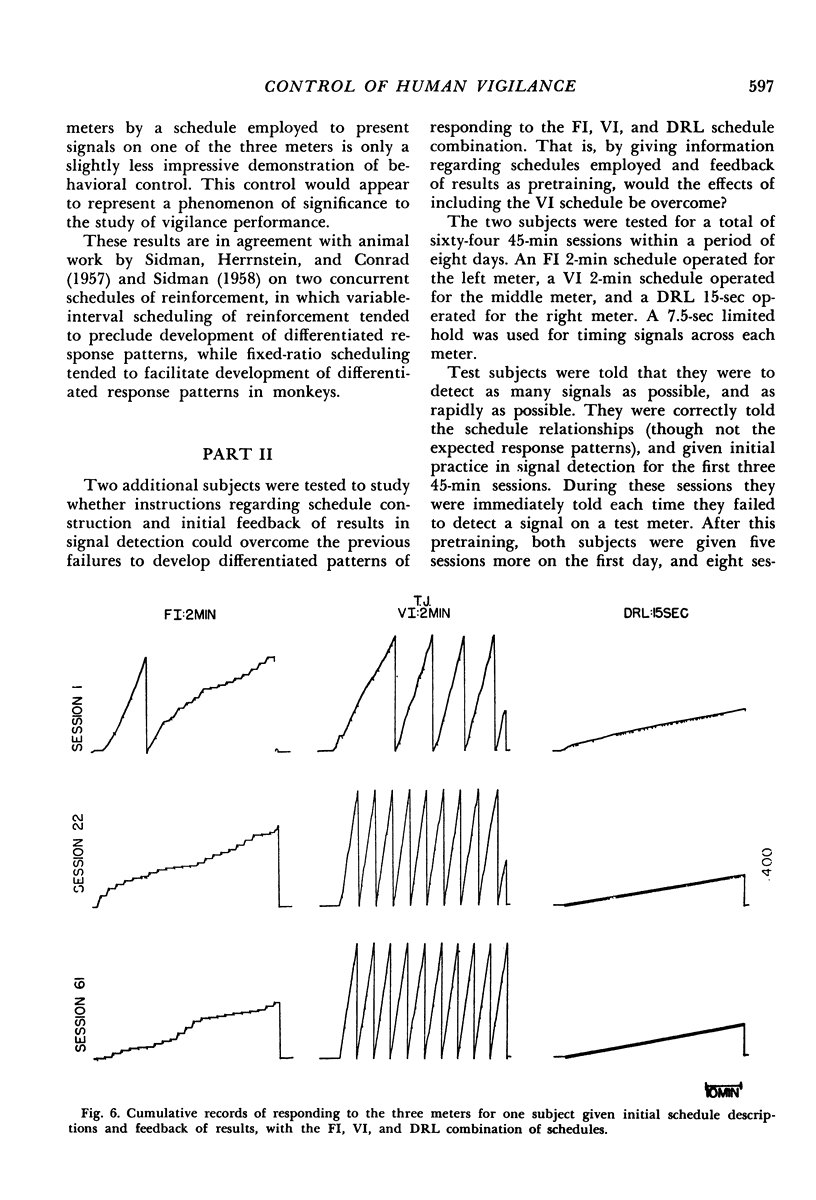
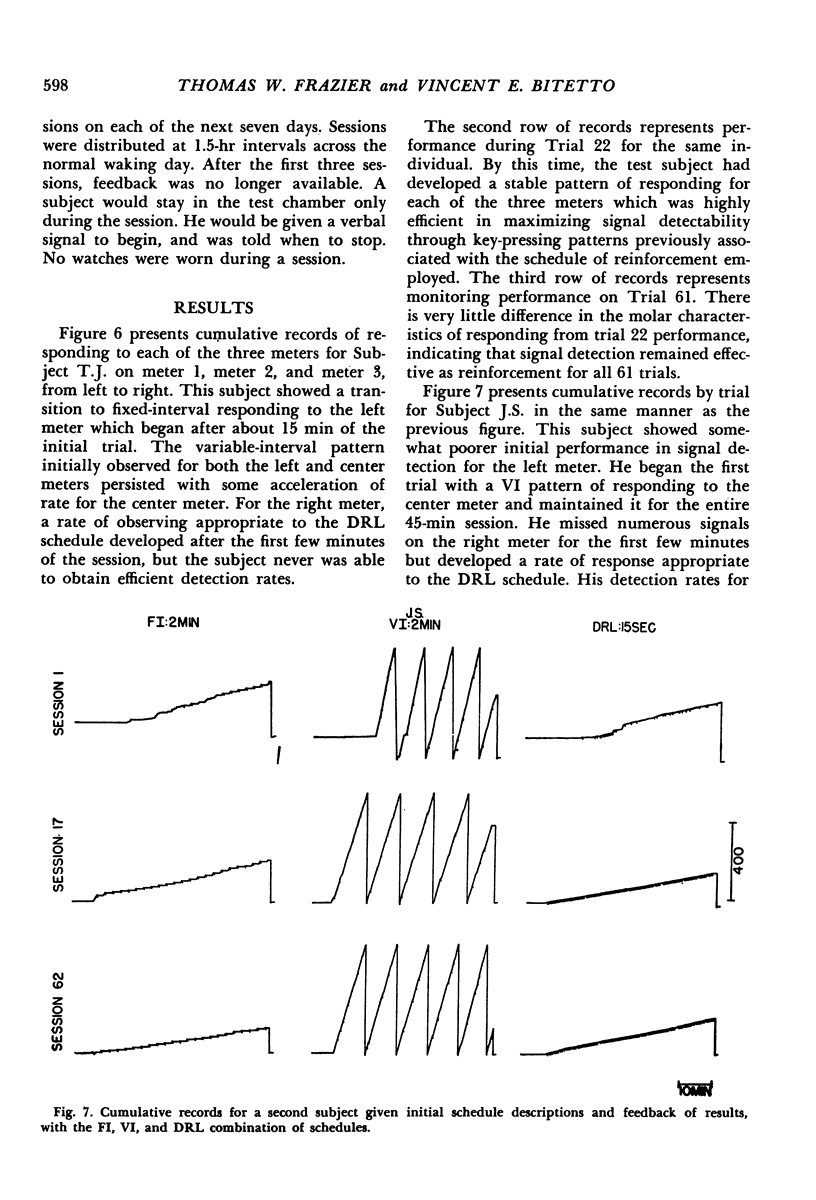
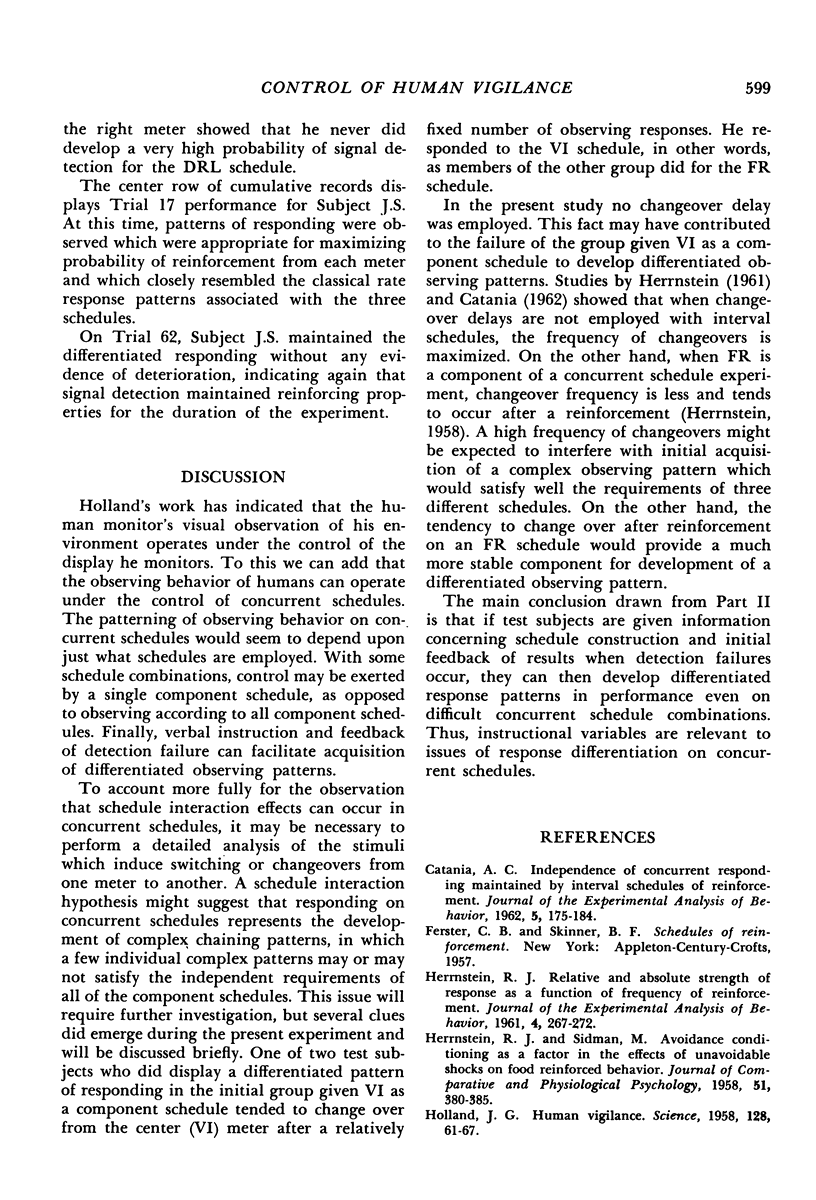

Images in this article
Selected References
These references are in PubMed. This may not be the complete list of references from this article.
- CATANIA A. C. Independence of concurrent responding maintained by interval schedules of reinforcement. J Exp Anal Behav. 1962 Apr;5:175–184. doi: 10.1901/jeab.1962.5-175. [DOI] [PMC free article] [PubMed] [Google Scholar]
- HERRNSTEIN R. J. Relative and absolute strength of response as a function of frequency of reinforcement. J Exp Anal Behav. 1961 Jul;4:267–272. doi: 10.1901/jeab.1961.4-267. [DOI] [PMC free article] [PubMed] [Google Scholar]
- HERRNSTEIN R. J., SIDMAN M. Avoidance conditioning as a factor in the effects of unavoidable shocks on food-reinforced behavior. J Comp Physiol Psychol. 1958 Jun;51(3):380–385. doi: 10.1037/h0038487. [DOI] [PubMed] [Google Scholar]
- HOLLAND J. G. Human vigilance: the rate of observing an instrument is controlled by the schedule of signal detections. Science. 1958 Jul 11;128(3315):61–67. doi: 10.1126/science.128.3315.61. [DOI] [PubMed] [Google Scholar]
- KELLEHER R. T., COOK L. An analysis of the behavior of rats and monkeys on concurrent fixed-ratio avoidance schedules. J Exp Anal Behav. 1959 Jul;2:203–211. doi: 10.1901/jeab.1959.2-203. [DOI] [PMC free article] [PubMed] [Google Scholar]
- SIDMAN M., HERRNSTEIN R. J., CONRAD D. G. Maintenance of avoidance behavior by unavoidable shocks. J Comp Physiol Psychol. 1957 Dec;50(6):553–557. doi: 10.1037/h0043500. [DOI] [PubMed] [Google Scholar]
- Schroeder S. R., Holland J. G. Operant control of eye movements during human vigilance. Science. 1968 Jul 19;161(3838):292–293. doi: 10.1126/science.161.3838.292. [DOI] [PubMed] [Google Scholar]
- Sidman M. By-products of aversive control. J Exp Anal Behav. 1958 Aug;1(3):265–280. doi: 10.1901/jeab.1958.1-265. [DOI] [PMC free article] [PubMed] [Google Scholar]



